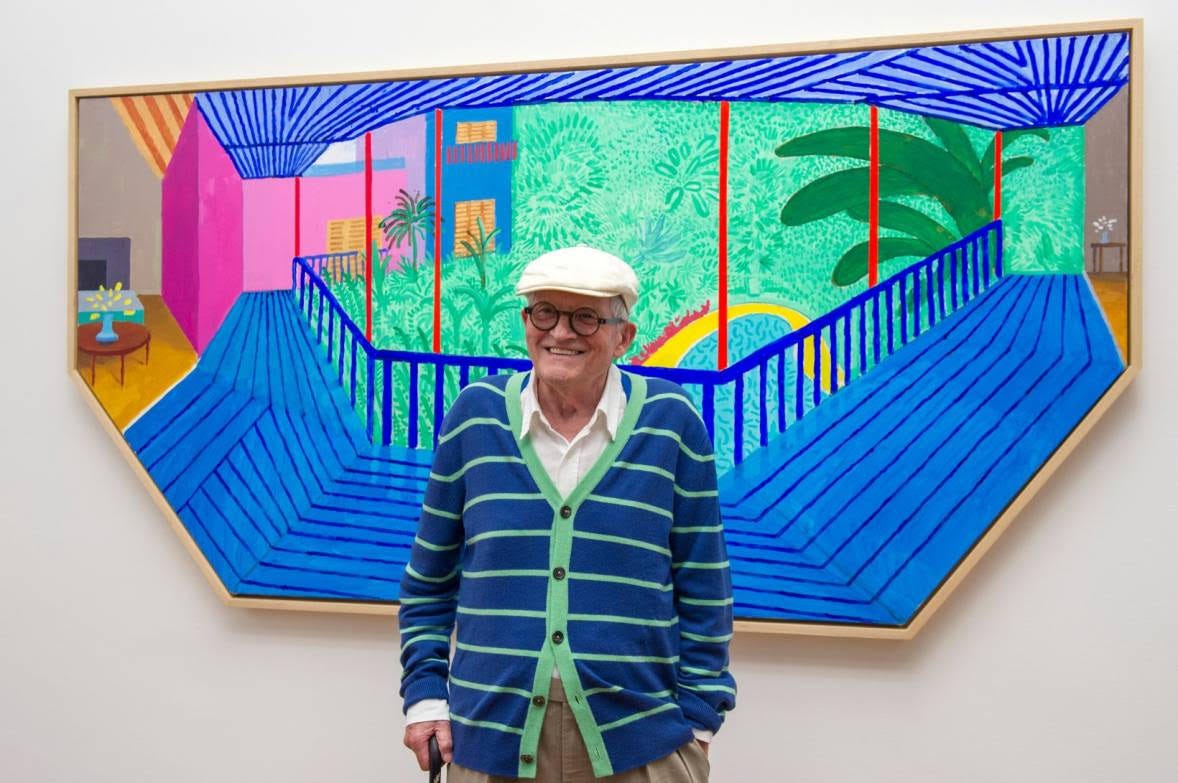Should the society embrace, love, support, and allow them to continue being creative, relevant, and in the public eyes? Or is it best for them to disappear so that we remember them as they once were?
I think life is like a supermarket with never ending aisles, furnished with a selection of various items. It is designed so that as soon as we finish with one phase of our lives, we can turn to the corner and walk into the next aisle. When we are young, we are shopping from the aisle of sex, fun, and adventure, and as we get older, we walk into a new aisle of this supermarket, which is still furnished with plenty of new items on its shelves to select from. The aisles of this supermarket are endless. How can we ask our artists to stop being passionate and creative because of age?
Metaphorically, here is my definition of passion. When we are born, we are all given these containers. We are told that during our lifetime, we are supposed to fill them up as we desire. These containers each have a different label, like love, wealth, work, success, and so on and so forth. Once we fill one container and it overflows, then we don’t want to bother with it anymore. It is like our soul is already saturated by the experience. Our soul has learned whatever it had to learn from filling up the container and wants to move onto the next experience and fill up the next container.
What amazes me is that Wendell Castle — the iconic furniture designer, Paul McCartney, and David Hockney, who all are the aging legends and icons, are still creative, still ambitious, and enthusiastic. They do not think, “Life is already over, so why even bother to create anymore?” To them, the meaning of old age is not rest assured that at this point of your life, you are done with living passionately, with all your containers full and overflowing.
At their age, when all of their peers’ containers are full and they have put lids on them and consider their jobs done and are resting, they still have room to fill up in their containers. They still have a zest for life and are still hungry to fly high and to experience even more height. To me, that is a wonderful thing. What is your take on this subject?
A Conversation with Wendell Castle, the Father of the Furniture Art Movement

1. What would you be doing if you were not designing furniture?
I cannot imagine doing anything else; any other activity would be a distant second, but if I had to name something, it would be restoring classic cars.
2. Is the process of creating a piece of furniture emotional for you? How does it feel to work with your hands?
I don’t think of it as emotional, but I am definitely very involved and it brings me great pleasure. I occasionally catch myself actually dancing in the studio.
As for working with my hands, it’s all I do. I draw with my hand (right), I cut, glue, carve, shape, etc., all with my hands, as there is no other way.
3. What made you choose making furniture over creating sculpture?
I don’t exactly know the answer to that question. However, I do know that from the very beginning I believed that a certain type of furniture could be a form of art, and that I could be the first to do it.
4. What is your guilty pleasure?
I guess that would be playing tennis or driving around in a classic car on a beautiful day, or playing guitar.
5. What is your idea of happiness? Has it always been the same? Could your art alone bring you happiness?
I think there is a lot more to happiness than my art. There must be some sort of balance between family, friends and work.
6. If you were to be reincarnated, would you like to come back as man, animal/bird, or a plant? Would you want to be an artist again?
If I were reincarnated I would like to come back as an artist, albeit one who could plan the piano.
7. What is your best virtue? What quality do you most admire in a man?
I suppose that would be my persistance in pursuing my dream of making my furniture a true form of art. I most admire in others honesty, directness, a sense of humor, and the ability to see the world as it really is.
8. Who is your favorite character, in real life and fictional?
Perhaps Jacques Tati, he was most certainly a character.
9. Who is your favorite music composer?
I have several: Mozart, John Field, Beethoven, Mendelssohn and Philip Glass.
10. Who is your favorite artist? By whom have you been influenced most?
Brancusi and Brancusi.
11. Who is your favorite writer?
It’s hard for me to name a favorite. Several would be: Laura Hillenbrand, Stephen Ambrose, Malcolm Gladwell, Annie Proulx and Erik Larson.
12. What is your present state of mind? What is next for Wendell Castle?
My present state of mind is probably best described as confused, which I believe is a good thing. I’m constantly trying to figure everything out, such as, “Where should I go next?” I know the answer will come…
Visit the artists mentioned in this post:
See the original post on http://mahvashmossaed.com/2013/08/11/a-conversation-with-wendell-castle-the-father-of-the-furniture-art-movement.
Tags: Art, Art Reviews, David Hockney, icons, legends, Paul McCartney, Wendell Castle
Posted in Art Reviews, Reviews |




Leave a Reply